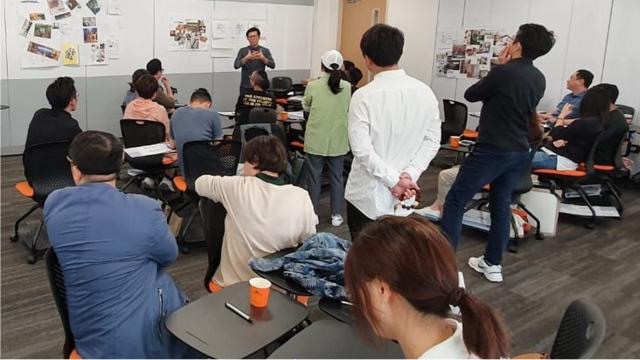
When Lim Puay Keat graduated with a diploma in Electrical and Electronic Engineering from a local polytechnic, he had scored well enough to land a place in a university.
Yet, life had other plans. To help support his family, he had to forgo his dreams of furthering his education. Thanks to the recommendation of a friend, he landed a job as an assistant engineer at the Land Transport Authority’s (LTA) Rolling Stock and Depot Equipment Engineering (RDE) department.
Undeterred, he decided to focus his energy on learning the ropes of the rail industry and understanding the inner workings of Singapore’s state-of-the-art transportation sector.
Life's unexpected turns had done little to dampen his dreams of attending university. If anything, they intensified it. Five years into his job, he got promoted to the role of engineer - a position usually reserved for employees who hold a university qualification. Years of hard work and perseverance had finally paid off.
Yet, he wasn’t satisfied. “As an engineer, I want to have the necessary skills and knowledge to be able to go beyond what is required of me,” said the 30-year-old.
“Upgrading myself allows me to learn more about my industry so that I can serve my company and the country’s transport network better.”
To become the best, he knew he had to join the best. He decided to sign up for SIT’s Sustainable Infrastructure Engineering (Land) degree programme to upskill himself. Having overseen engineering maintenance and quality control at LTA for almost five years, Puay Keat had always been keen to find out how the principles of mechanics — namely space, time, mass and force — affected rolling stocks and railways.
With the degree programme’s keen focus on fundamental engineering disciplines like railway, mechanical, electrical, and electronic engineering, he knew this was the right path forward.
An eye on the future
SIT’s emphasis on the work-learn continuum spoke to working professionals like Puay Keat, who seek to future-proof their skills.
“The applied learning pedagogy and in-depth curriculum were huge factors in my decision, but it was SIT’s focus on continuous reskilling and development that stood out for me.”
The best part about the Sustainable Infrastructure Engineering (Land) degree programme, he added, is its direct relevance to his work.
For example, the mechanics engineering module imparts knowledge on how to predict the effects of force and motion while showcasing the creative design functions of engineering. These design principles, he believes, will help him take on greater responsibilities in the workplace in areas like train design and conceptualising in the future.
“What I am learning currently helps provide a firm foundation for the future. Ultimately, my time at SIT will help me build upon my existing skillset and prepare me for the evolution of the industry.”
Smarter, safer travels
With smart technology driving the future of transportation, Puay Keat aims to improve innovation in railway maintenance systems by tapping information and communication technology. By incorporating IoT and big data-related technologies, he hopes to make the industry safer and smarter for both operators and passengers.
Developed in consultation with key industry stakeholders, the programme paves the way for a more directed, industry-oriented approach by allowing students to immerse themselves in the land transport industry when they embark on their Integrated Work Study Programme (IWSP) with established organisations. These include LTA, SMRT, SBS Transit, Singapore Technologies, and railway suppliers.
“To be able to contribute to the country’s transport network is a huge privilege for me. By upgrading myself at a respected and industry-focused university like SIT, I am confident that I can make a difference,” he said.
![[FA] SIT One SITizen Alumni Initiative_Web banner_1244px x 688px.jpg](/sites/default/files/2024-12/%5BFA%5D%20%20SIT%20One%20SITizen%20Alumni%20Initiative_Web%20banner_1244px%20x%20688px.jpg)


